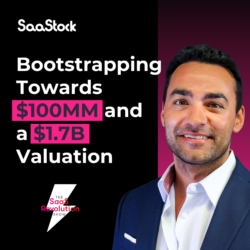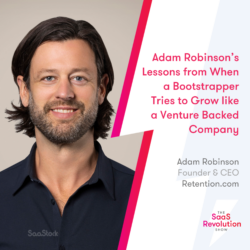SaaS companies obsess over acquisition. They fine-tune ad spend, test landing page copy, tweak SEO, and hire sales teams that can talk a prospect into a free trial. Yet once that prospect actually signs up, too many companies shove them into a swamp of half-baked tutorials, cryptic dashboards, and unresponsive support.
The result? Customers churn before they’ve even experienced the product’s value. It’s not that the product is bad — it’s that the onboarding is broken.
The tragedy here is that onboarding isn’t just “support.” It’s the first real moment of truth for a customer. If you botch it, you waste all the energy that went into acquisition. If you nail it, you create loyal advocates who stay, expand, and evangelize.
This article looks at where SaaS companies consistently fail in onboarding — and what can actually be done differently. Spoiler: it’s rarely about building more pop-ups or sending more emails.
Why onboarding matters more than acquisition
Here’s a hard truth: most SaaS products aren’t unique. Competitors are a click away, and switching costs for customers are dropping. What really differentiates isn’t feature checklists but how quickly and smoothly customers reach their first “aha!” moment.
- McKinsey found that improving onboarding can boost revenue by up to 20%.
- ProfitWell data shows that 23% of SaaS churn happens because users don’t understand how to get value.
- In B2B, enterprise buyers are even less forgiving: if onboarding feels clumsy, they’ll cut losses fast and choose a vendor who makes the ramp-up painless.
So onboarding isn’t “nice to have.” It’s revenue insurance.
The common onboarding sins
Let’s get opinionated: here are the biggest, recurring ways SaaS companies screw up onboarding.
- Overloading with features instead of outcomes
Too many companies treat onboarding like a product tour. They walk users through every button, every tab, every integration — as if the customer is signing up to admire a museum of features.
Reality check: customers don’t care about features. They care about solving a problem. If you drown them in tooltips about all 57 things your product can do, they’ll quit before reaching the one outcome they actually wanted.
Example: A project management tool that forces new users through a 10-minute guided tour covering Gantt charts, Kanban boards, reporting dashboards, integrations, and admin controls. Most users just want to add a task and assign it. The rest is noise.
Better approach: Guide the customer to the smallest action that delivers visible value. Save the rest for later, once trust is earned.
- Mistaking “sign-up” for “onboarded”
Just because someone created an account doesn’t mean they’re truly onboarded. Real onboarding ends only when the customer:
- Has achieved a meaningful outcome.
- Knows how to repeat that outcome.
- Feels confident the product fits their workflow.
Most SaaS teams stop measuring onboarding at “account created” or “first login.” That’s like celebrating when someone walks into your store — even if they leave without buying.
- Relying on generic email drips
The default “onboarding sequence” for many SaaS tools is a templated five-email drip campaign:
- “Welcome!”
- “Here’s a tour of features.”
- “Did you know we integrate with Zapier?”
- “You’re missing out on advanced reporting.”
- “Book a demo!”
This is lazy marketing disguised as onboarding. Customers need contextual help inside the product, not inbox spam that feels disconnected from their real struggles.
Example: An invoicing SaaS sends daily emails about integrations before the user has even created their first invoice. The disconnect frustrates, rather than helps.
- Forcing self-serve on everyone
Self-serve onboarding is great for small accounts. But many SaaS companies impose it universally, even on enterprise clients who expect white-glove treatment.
Enterprise buyers don’t want to “explore at their own pace.” They want a structured rollout, training sessions, and a dedicated contact who ensures ROI. Forcing them through the same pop-up tour you give a solo freelancer screams immaturity.
- Ignoring psychological friction
Onboarding isn’t just about interfaces. It’s about psychology. Customers are juggling limited attention, skepticism, and the fear of wasting time.
Common friction points:
- Asking for too much data up front (credit card, company size, “how did you hear about us?”).
- Dropping customers onto a blank dashboard with no guidance.
- Using jargon that assumes technical knowledge they don’t have.
These small moments accumulate into churn.
- Not involving humans early enough
AI and automation are trendy, but in early onboarding, human touch accelerates trust. Customers often churn not because they can’t figure things out, but because they don’t feel supported.
Too many SaaS companies hide behind AI chatbot development, ticket queues, or “knowledge base only” support during the most vulnerable period.
A good practice is to periodically collect structured feedback—similar to how HR teams use a job satisfaction survey to understand where new users feel stuck or unsupported. This ensures onboarding stays empathetic, human, and continuously improving.
- Treating onboarding as one-size-fits-all
A new user in a 10-person startup does not onboard the same way as an enterprise IT admin. Yet many SaaS flows force them down identical paths.
Without segmentation, you either overwhelm the startup or under-serve the enterprise. Both are costly mistakes.
- Failing to connect onboarding with long-term retention
Onboarding isn’t just about the first week. It sets patterns that drive long-term adoption. If you don’t establish best practices early, customers will misuse the product, get frustrated, and eventually churn.
Example: A CRM tool that doesn’t push users to import clean data during onboarding. Six months later, the system is a swamp of duplicates and the customer blames the software — not their own messy data entry.
Why most SaaS onboarding is broken
All these failures share a root cause: SaaS companies treat onboarding as a marketing afterthought rather than a core product function.
- Product teams focus on features.
- Marketing teams focus on acquisition.
- Sales teams focus on closing.
- Support teams fight fires after onboarding fails.
Nobody owns the full customer journey from sign-up to success. The result is fragmented, shallow onboarding that pleases no one.
What good onboarding looks like
Whether you’re scaling a complex SaaS or testing ideas on a no code marketplace builder, these principles apply universally. So, what’s the alternative? Here are the pillars of effective SaaS onboarding.
- Define the “aha!” moment clearly
You need a sharp, measurable definition of what counts as success in onboarding. It’s not “signed up” or “logged in.” It’s the first moment where the product solves the customer’s core problem.
- For Slack: sending the first message to a colleague.
- For Canva: designing and exporting a first graphic.
- For Dropbox: uploading and sharing a file.
Once you define this, your entire onboarding flow should be optimized to get customers there as fast as possible.
- Personalize the path
Onboarding must be segmented. A first-time founder shouldn’t see the same flow as an enterprise IT manager.
Practical ways to segment:
- Industry or role chosen at sign-up.
- Company size.
- Source channel (self-serve vs sales-led).
Personalization doesn’t need to be fancy AI. Even simple branching logic dramatically improves relevance.
- Blend self-serve and human touch
The best SaaS companies don’t choose between automation and human support. They blend them.
- Self-serve tutorials for simple tasks.
- Contextual in-app help for medium complexity.
- Live chat, onboarding calls, or CSM support for high-value accounts.
This tiered approach ensures efficiency without making anyone feel abandoned.
- Use product-led onboarding, not email-led onboarding
Email sequences can supplement, but the real magic happens inside the product.
- Progressive disclosure: reveal features only when the user is ready.
- In-app nudges: contextual tips tied to the next logical action.
- Checklists: clear milestones that show progress toward onboarding completion.
If onboarding feels external to the product, customers will tune out.
- Tackle psychological friction head-on
Good onboarding reduces anxiety by:
- Giving quick wins before asking for heavy setup.
- Explaining why a step matters, not just what to do.
- Providing safety nets: undo options, drafts, trial modes.
When customers feel supported and in control, they explore more deeply.
- Connect onboarding with long-term success
Onboarding should plant seeds for retention. Teach best practices that will matter months later.
- Encourage data hygiene early.
- Show integrations that tie into the customer’s core workflow.
- Highlight collaboration features to make the product sticky across teams.
When customers are set up for success early, they’re far more likely to become advocates. Tools like ReferralCandy help SaaS companies capture and scale that advocacy with automated referral programs, turning well-onboarded users into promoters who actively bring in new customers.Onboarding isn’t just about the first week; it’s about building habits that stick.
Case studies: where onboarding made or broke companies
Slack: reducing time to value
Slack nailed onboarding by emphasizing the first message. Instead of overwhelming users with every feature, they guided teams to invite colleagues and start chatting. That simple “aha!” cemented Slack as essential before advanced features even entered the picture.
Evernote: a cautionary tale
Evernote once had a beloved product, but poor onboarding for new features left users confused. Instead of gradually introducing functionality, they dumped complexity all at once. The result was adoption decline and eventual loss of dominance.
HubSpot: segmentation done right
HubSpot splits onboarding into tiers: free users get self-serve guides, SMBs get lightweight human support, and enterprise customers get a structured rollout with a dedicated success manager. Each path matches customer value.
How to fix SaaS onboarding: a playbook
Here’s a practical framework for turning onboarding from weak link to growth lever.
- Map the customer journey. From sign-up to first “aha!” moment, identify every step. Remove friction ruthlessly.
- Set ownership. Create a cross-functional onboarding team spanning product, success, and support. Stop leaving it as “everyone’s job.”
- Instrument everything. Track metrics beyond sign-ups: time to first value, activation rate, feature adoption curve, and early churn.
- Layer support. Use automation for scale, but keep humans where stakes are high.
- Test relentlessly. Onboarding isn’t “set and forget.” It needs constant iteration as your product evolves.
Metrics that actually matter
Most companies track “sign-ups.” That’s useless. Better onboarding metrics include:
- Activation rate: % of users who reach the defined “aha!” moment.
- Time to value (TTV): How long it takes a new user to achieve their first meaningful outcome.
- Onboarding completion: % of users who finish the onboarding journey (checklists, tutorials, etc.).
- Feature adoption curve: How quickly users expand into secondary features.
- Early churn: Accounts lost within the first 30/60/90 days.
These numbers tell you whether onboarding is actually working.
The cost of ignoring onboarding
The SaaS graveyard is full of companies that over-invested in acquisition but under-invested in onboarding. Customer acquisition cost (CAC) is rising, while tolerance for clunky experiences is shrinking.
If your onboarding doesn’t work, here’s what happens:
- Your CAC payback period balloons.
- Your NRR (net revenue retention) sinks.
- Your word-of-mouth pipeline dries up.
In other words: you burn money to fill a leaky bucket.
The future of SaaS onboarding
Here’s where onboarding is headed:
- Adaptive onboarding flows powered by AI that adjust based on user behavior in real time.
- Onboarding as a revenue lever, tied directly to expansion and upsells.
- Community-driven onboarding, where customers learn from each other via forums, templates, and shared best practices.
- Onboarding tied to outcomes, not usage — measuring success based on ROI achieved, not features clicked.
Conclusion: onboarding is the real battleground
Customer onboarding isn’t a support function. It’s not a marketing afterthought. It’s the core battlefield of SaaS success.
Most companies fail here because they treat onboarding as a checklist instead of an experience. They obsess over acquisition, then bleed customers before value is delivered.
The SaaS winners of the next decade will be those who treat onboarding as sacred: fast, personalized, outcome-driven, and relentlessly optimized.
If you’re building SaaS and struggling with churn, don’t blame your sales team. Don’t blame the market. Look at onboarding. Chances are, that’s where you’re really failing.





